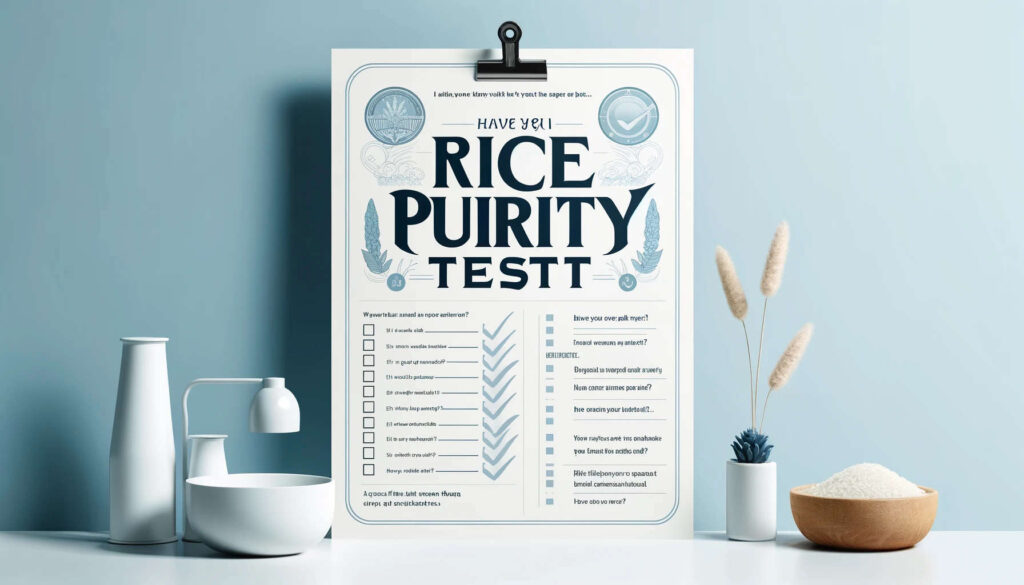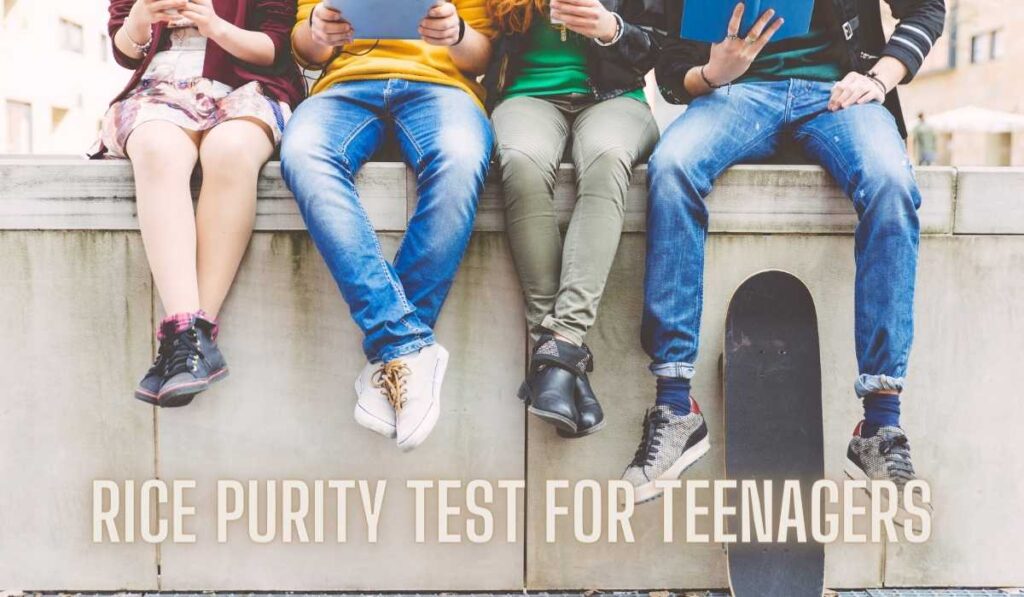The Rice Purity Test has long been a staple of college culture, providing students with a fun yet introspective way to gauge their experiences against those of their peers.
Originating at Rice University, this 100-question survey spans a wide array of topics, from the innocuous to the risqué, offering a percentage score that reflects one’s “purity” or lack thereof.
Over time, the test’s popularity has extended far beyond its original collegiate context, inspiring a multitude of adaptations and spinoffs, each with its unique twist and cultural significance.
These variations cater to diverse communities and interests, reflecting the evolving nature of societal norms and personal experiences.
1. The Original Rice Purity Test
Overview: The Original Rice Purity Test, conceived by students at Rice University, is a well-known survey featuring 100 questions. It is designed to measure a person’s level of innocence and experiences across various domains such as relationships, substance use, and personal adventures. This test has gained widespread popularity for its insightful yet entertaining approach to self-assessment.
Content: The questions in the Original Rice Purity Test cover a broad spectrum of experiences, from the innocent to the more daring. Examples include “Held hands romantically?” and “Used a drug stronger than marijuana?”. The test’s comprehensive nature ensures it touches on many typical aspects of college life, offering a detailed reflection of an individual’s journey through these formative years.
Tone: The tone of the test is a mix of playful and introspective. While the questions are straightforward and often lighthearted, they also encourage participants to reflect on their past experiences and personal growth without passing judgment. This balance makes the test enjoyable and meaningful.
Cultural Relevance: The Original Rice Purity Test has maintained its status as a rite of passage for many college students. It symbolizes the transition from adolescence to adulthood, capturing the diverse and often transformative experiences that define this critical period.
For many, taking the test is a nostalgic exercise that highlights their personal journey and shared experiences with peers.

2. The LGBTQ+ Purity Test
Overview: In response to the need for more inclusive tools of self-reflection, the LGBTQ+ Purity Test was created to resonate specifically with the experiences of LGBTQ+ individuals. This version of the test acknowledges and validates the unique challenges and milestones faced by this community, providing a tailored and relevant self-assessment tool.
Content: The questions in the LGBTQ+ Purity Test are designed to reflect significant experiences and milestones within the LGBTQ+ community. Examples include “Come out to a family member?” and “Attended a Pride parade?”. These questions capture a range of activities and moments that are particularly relevant to LGBTQ+ individuals, from the deeply personal act of coming out to the celebratory participation in community events.
Tone: The tone of the LGBTQ+ Purity Test is empathetic and affirming. It aims to celebrate the diversity of experiences within the LGBTQ+ community, offering a supportive space for individuals to reflect on their journeys. This approach ensures that participants feel recognized and valued, regardless of where they are in their personal journeys.
Cultural Relevance: The LGBTQ+ Purity Test holds significant cultural relevance as it highlights the varied and unique journeys within the LGBTQ+ community.
By providing a platform for representation and validation, this version of the test helps to foster a sense of belonging and pride. It underscores the importance of recognizing diverse experiences and promotes a greater understanding and acceptance of LGBTQ+ identities.

3. The Geek Purity Test
Overview: The Geek Purity Test is designed specifically for the geek and nerd communities, celebrating the unique interests and activities that define these cultures. This version of the test includes questions related to gaming, science fiction, fantasy, and various fandoms, providing a specialized and engaging way for individuals to reflect on their involvement in these niche areas.
Content: The questions in the Geek Purity Test delve into activities and experiences central to geek culture. Examples include “Attended a comic convention?” and “Played a tabletop RPG?”. The test covers a wide range of interests, such as video games, comic books, science fiction and fantasy literature, cosplay, and more. By focusing on these specific hobbies and passions, the test provides a comprehensive reflection of an individual’s engagement with geek culture.
Tone: The tone of the Geek Purity Test is light-hearted and celebratory, often adopting a tongue-in-cheek approach to the activities and interests it covers. This playful tone makes the test enjoyable and entertaining, while also fostering a sense of pride and camaraderie among participants. The questions are designed to be fun and engaging, encouraging participants to reminisce about their favorite geeky moments.
Cultural Relevance: The Geek Purity Test holds significant cultural relevance as it offers a fun and inclusive way for members of the geek and nerd communities to bond over their shared interests and experiences.
By highlighting the activities and passions that are central to these cultures, the test promotes a sense of belonging and mutual appreciation. It serves as a reminder of the rich and diverse landscape of geek culture, celebrating the unique ways in which individuals engage with and contribute to their favorite fandoms and hobbies.

4. The Sexual Purity Test
Overview: The Sexual Purity Test is a specialized version that zeroes in exclusively on romantic and sexual experiences. By stripping away other elements, this test offers a focused exploration of one’s sexual history and behaviors, providing a nuanced understanding of sexual purity and activity.
Content: The questions in the Sexual Purity Test cover a wide spectrum of romantic and sexual activities, ranging from the relatively innocent to the explicitly intimate. Examples include “Kissed someone passionately?” and extend to more detailed and explicit topics. This targeted approach allows participants to reflect specifically on their sexual behaviors and experiences, offering a comprehensive assessment of their romantic and sexual history.
Tone: The tone of the Sexual Purity Test is direct and often explicit, catering to individuals who are specifically interested in exploring and understanding their sexual purity. This straightforward approach ensures that the test is clear and unambiguous, facilitating honest self-assessment. The explicit nature of some questions also helps in fostering a mature and open discussion about sexual experiences and boundaries.
Cultural Relevance: The Sexual Purity Test is particularly useful in intimate or mature settings, where discussions about sexual health, behaviors, and boundaries are more common. By providing a structured way to reflect on one’s sexual history, the test often sparks important conversations about sexual health, consent, and personal boundaries.
It serves as a valuable tool for individuals looking to gain a deeper understanding of their sexual experiences and for fostering open, honest dialogues about sexuality. This relevance is heightened in educational and counseling contexts, where such discussions can contribute to better sexual health awareness and personal well-being.

5. The Rice Purity Test for Teenagers
Overview: The Rice Purity Test for Teenagers is a tailored version of the original test, designed specifically to reflect the experiences and challenges faced by adolescents. This version aims to provide a relevant and age-appropriate self-assessment tool for teenagers as they navigate the complexities of growing up.
Content: The questions in the Rice Purity Test for Teenagers are adapted to suit the typical experiences of adolescence. They include queries such as “Had a first kiss?” and “Skipped school without permission?”. By focusing on activities and milestones common during the teenage years, this test offers a relevant and relatable reflection of teenage life.
Tone: The tone of this test is supportive and approachable, designed to resonate with younger participants. It encourages honest self-reflection without being overly intrusive or explicit, making it suitable for a younger audience. The questions are crafted to be engaging and thought-provoking, helping teenagers reflect on their experiences in a non-judgmental manner.
Cultural Relevance: The Rice Purity Test for Teenagers is particularly relevant as a tool for fostering self-awareness and open dialogue among adolescents. It can be used in educational settings, youth groups, or among friends to spark conversations about growing up, peer pressure, and personal boundaries.
By providing a structured way to reflect on their experiences, this test helps teenagers understand and navigate their formative years with greater awareness and confidence.

6. The Internet Purity Test
Overview: As internet culture surged, the need for a version of the Rice Purity Test that mirrored online behaviors became apparent. The Internet Purity Test was created to address this niche, offering a modern take that reflects the digital lives of today’s youth and adults.
Content: The Internet Purity Test features questions specifically tailored to online activities and interactions. Examples include “Participated in a forum flame war?” and “Downloaded music illegally?”. While it retains some themes from the original test, such as relationships and personal behaviors, this version places a strong emphasis on digital interactions, capturing the essence of life in the age of the internet. Other questions might probe experiences with social media, online gaming, digital content creation, and virtual relationships, making it a comprehensive reflection of one’s internet footprint.
Tone: The tone of the Internet Purity Test is slightly more humorous and irreverent compared to the original. This reflects the casual, often anonymous, and sometimes playful nature of online behavior. The test embraces the quirks and peculiarities of internet culture, encouraging participants to reflect on their digital experiences with a sense of humor and a lighthearted approach.
Cultural Relevance: The Internet Purity Test holds significant cultural relevance, particularly among digital natives who have grown up immersed in online environments. It highlights the unique experiences and challenges of navigating the internet, from the early days of chat rooms and forums to the complexities of social media and streaming.
This version of the test not only provides a nostalgic trip for those who remember the early internet but also serves as a contemporary reflection of how deeply intertwined our lives have become with digital technology. By focusing on online behaviors, it offers valuable insights into the evolving nature of social interactions and personal experiences in the digital age.
Conclusion
The myriad variations of the Rice Purity Test vividly illustrate the evolving nature of cultural norms and the diverse experiences of different communities. Each adaptation offers a distinct and valuable lens through which individuals can reflect on their lives and shared experiences.
The Original Rice Purity Test remains a timeless rite of passage for many college students, capturing the essence of youthful adventures and marking the transition from adolescence to adulthood. The Internet Purity Test highlights the unique experiences of digital natives, focusing on online behaviors and interactions that have become central to modern life.
The LGBTQ+ Purity Test celebrates the milestones and challenges specific to the LGBTQ+ community, providing an affirming space for individuals to reflect on their journeys. The Geek Purity Test brings together enthusiasts of gaming, science fiction, and various fandoms, celebrating niche interests and the vibrant culture that surrounds them.
The Sexual Purity Test offers a focused exploration of romantic and sexual behaviors, encouraging honest discussions about sexual health and boundaries. Similarly, the Rice Purity Test for Teenagers addresses the experiences of adolescents, providing a relevant and age-appropriate tool for self-assessment during their formative years.
By acknowledging and exploring these diverse adaptations, we can better appreciate the rich tapestry of human experience that these tests represent. They not only highlight the commonalities and differences within various communities but also foster greater understanding and acceptance.
Through these reflections, we gain a deeper insight into the evolving nature of our cultural norms and the varied paths that shape our lives.


